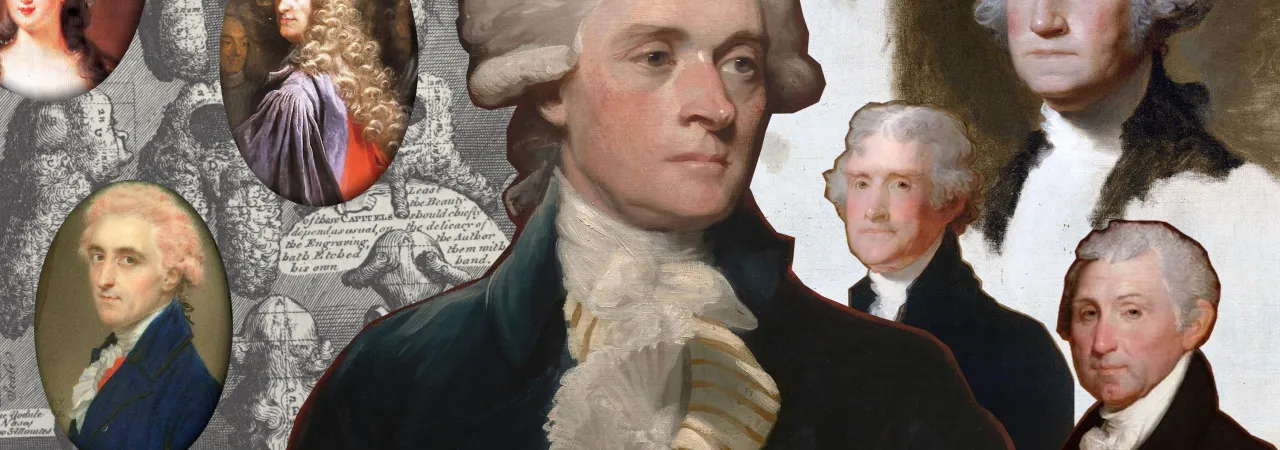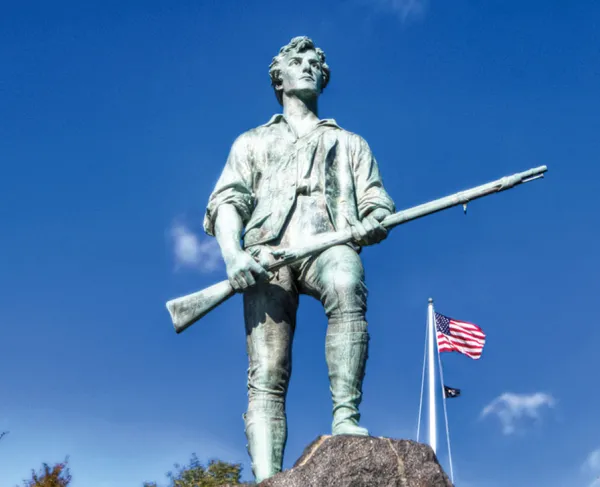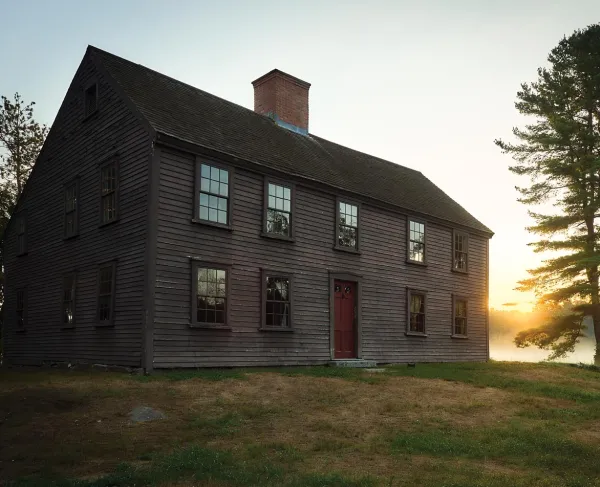
In popular culture, many gentlemen of the 18th century are shown wearing curly white wigs as a part of their everyday look. Gilbert Stuart, the famous portraitist who painted the Founding Fathers, depicted five of the first six Presidents with pure white hair. Modern viewers often assume that these are wigs, mostly due to the proliferation of wig-wearing in movies and television. However, by the time of the American Revolution, wigs were out, replaced by a trend for powdering one’s natural hair. While it’s true that wigs were a major status symbol early in the second half of the 18th century, by 1800 short, natural hair was all the rage. Politics, cleanliness, ailments, and cost were all factors in the rise and fall of wigs.
How the Wig Got Big
In the 17th century, hairlines were an important aspect of fashion – a good hairline was the mark of a well-bred man. Unfortunately, syphilis was also on the rise in Europe, ultimately affecting more Europeans than the Black Plague. This happened well before the discovery of antibiotics, so people afflicted with syphilis suffered all the effects, including sores and patchy hair loss. As good hair was associated with status and style, baldness and hair loss compounded the shame of having syphilis.
Wigs were commonly used to cover up hair loss, but their use did not become widespread until two Kings started to lose their hair. King Louis XIV of France experienced hair loss at the early age of 17, and he hired 48 wigmakers to help combat his thinning locks. His English cousin, King Charles II, began wearing wigs a few years later, when his hair began to prematurely grey – both conditions being syphilitic signals. A fashion was born, as courtiers started wearing wigs, and the trend trickled down to the merchant class.
The wigs, or perukes as they were called, were convenient because they were relatively easy to maintain, only needing to be sent to a wigmaker for a delousing. As wigs became more popular, they became a status symbol for people to flaunt their wealth. An everyday wig cost 25 shillings, a week’s worth of wages for a common Londoner. The term ‘bigwig’ stems from this era, when British nobility would spend upwards of 800 shillings on wigs. In 1700, 800 shillings was approximately £40 (about $50 today) which when calculated for inflation, comes out to around £8,297 or $10,193 in today’s currency.
That’s a lot of dough! So, who wore wigs? More importantly, who didn’t wear them?
Good question! British colonial governors more than likely wore wigs, and many portraits of early American political discussions feature rooms of men, many with white hair, commonly assumed to be wigs. Before the American Revolution this was likely, although given the association of wigs with nobility, it’s likely that not all patriots depicted with white hair were wearing wigs.
Despite common misconceptions, George Washington never actually wore a wig. He was one of five Presidents who was a red-head, and he powdered his hair white, as white hair was still considered extremely fashionable, and a sign of wealth and knowledge. However, the next four Presidents, John Adams, Thomas Jefferson, James Madison and James Monroe did indeed wear wigs. Women also wore wigs, although the proliferation of wig-wearing was not as far-reaching in the United Kingdom as it was in France, where women like Marie Antoinette were famous for their wigs.
Military officers, particularly in the British Army, had an ever-changing relationship with the wig. Some officers wore wigs – but only very specific military plait wigs, not the wigs that were bought and worn by the gentry. According to Revolutionary War Journal, “perukes were hot and heavy, extremely expensive, and constantly infected with bugs,” which is not ideal for military use. Campaign wigs, particularly the Ramillies wig, named after a British victory during the War of Spanish Succession in 1706, were used by officers. It was a short pigtail, or “queue” tied near the scalp and at the bottom of the plait. While these queues were originally fashioned from a soldier’s real hair, fake queues quickly became the norm. George Washington's hair is depicted in such a style in the painting The Courtship of Washington (1860) by John C. McRae. However, just as wigs were reserved for the gentry versus commoners, enlisted soldiers did not wear wigs in the way officers did. They simply plaited, or braided, their hair if it was long enough, or wore fake plaits attached by ribbons, kept together by grease or tallow, and, in the case of the British Army, covered in powdering flour, which came out of their own pay and was a part of the weekly ration.
If they were so popular, why did wigs go out of fashion?
Almost as quickly as wigs rose in popularity and physical height, they swiftly fell, weighted down by their cost and philosophy. The Age of Enlightenment brought a new mentality, where educated men became more concerned with the plight of the common man. As a bourgeoise class arose, extravagant expenditure on fashion and hair was perceived as ignorant. Wigs, particularly in Revolutionary France, were considered a sign of aristocracy – the newly wealthy bourgeoise did not want to be associated with nobility, particularly given that those same nobles were quite frequently losing their wigged heads to the guillotine. More and more, wigs began to be associated with deception. While wigs were originally worn to hide effects of syphilis, donning a wig could be taken as a sign that the wearer was hiding not only visual effects of a disease, but perhaps deeper secrets as well. During the tenure of William Pitt the Younger, Parliament passed the Hair Powder Act of 1795, effectively signing the death warrant for wigs. Unless one met certain qualifications, such as being a member of the British Royal Family or the Clergy, citizens had to purchase a certificate to purchase hair powder. The certificate cost the equivalent of $122 today.
Where are all the wigs now?
Wigs have made such an impact in historical remembrance that they seem to be represent the symbol of late 17th century history. Hollywood seems to be particularly attached to misrepresenting the proliferation of wigs. TV shows, such as "Turn,” can’t seem to get enough of the white powdered wigs, with every British soldier depicted wearing one. Although Pirates of the Caribbean largely depicted British sailors without wigs, those pesky powdered perukes still made their appearance.
If you’re hoping to catch a glimpse of these artifacts in person, some museums – notably London’s Victoria & Albert Museum – have wigs in their collection. However, relatively few remain, as they were not particularly easy to preserve.
The lasting legacy of wigs is undeniable – British judges and barristers still wore wigs well into the 21st century, although the practice is largely ceremonial now. Despite not being quite as prevalent as depictions in modern day popular culture might suggest, wigs still had a major impact on fashion of the 18th century. And since fashion is ever-changing and often cyclical, maybe someday the big wig will be back in style!

